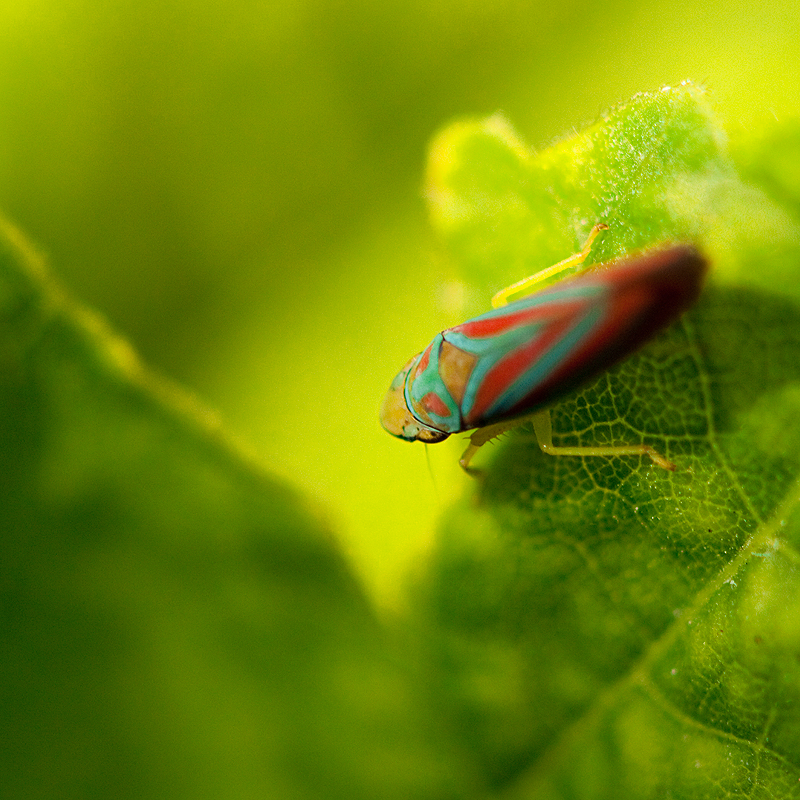Macro photography is a great love of mine, and a very fun hobby. The best part is that whether it’s spring buds, yarn fibres, glaze details or critters – there is always something to shoot. Bored? Go on out and do some macro. There’s a great shot waiting right in your backyard.

Some of my favourite shots are up there because they capture something that you don’t normally get to see; the tilt of the stars, a birds wings frozen in motion etc. The cool thing about macro is that you’ll always get something that people normally wouldn’t get to see. So, at the least, it’s a fascinating shot every time.

For macro, I use Canon’s 100mm prime f2.8 macro lens. It’s also a fantastic long-range lens and I’ve done a lot of wildlife work with it. It’s not a cheap lens; but it’s worth every penny. It is, without question, the sharpest lens in my kit.

On top of that I use Kenko extension tubes. I bought mine at Henrys, used, for $100. Extension tubes have no glass, but lengthen the distance between your lens and your camera. This enables a lens to focus closer than it’s normal set minimum focusing distance. Kenko tubes come in sets of 3, which you can use together, or individually, depending on the effect you’re going for.

Here is an example of my 100mm lens, with just one Kenko tube on:

Here it is with 2 Kenkos:

And finally, with all 3:

Quite a dramatic change, right? Here it is again:

My tiger lilies with only one extension tube.

With 2 extension tubes

... and with the whole kit n kaboodle.
I’ve done some great critter photography with this set up:

Tips for the actual shooting part:
- This lens set up weighs a lot, so a tripod is a good option.
- The extension tubes compromise your exposure and you’ll need a longer shutter speed than normal – so bright light is essential if your subject is a moving one.
- It can also be difficult to focus when you’re trying to get as close as possible, so what I do is lock my focus as tight as I can get it and then physically move the camera toward and away from my subject until I find that sweet spot for the shot.
- Be ready to be patient – shooting outdoors means wind and that means your subject may not stay where you want them, even in a gentle breeze – but when you do get that perfect shot it’s that much more rewarding :)